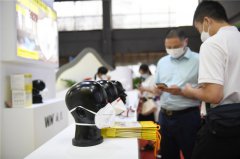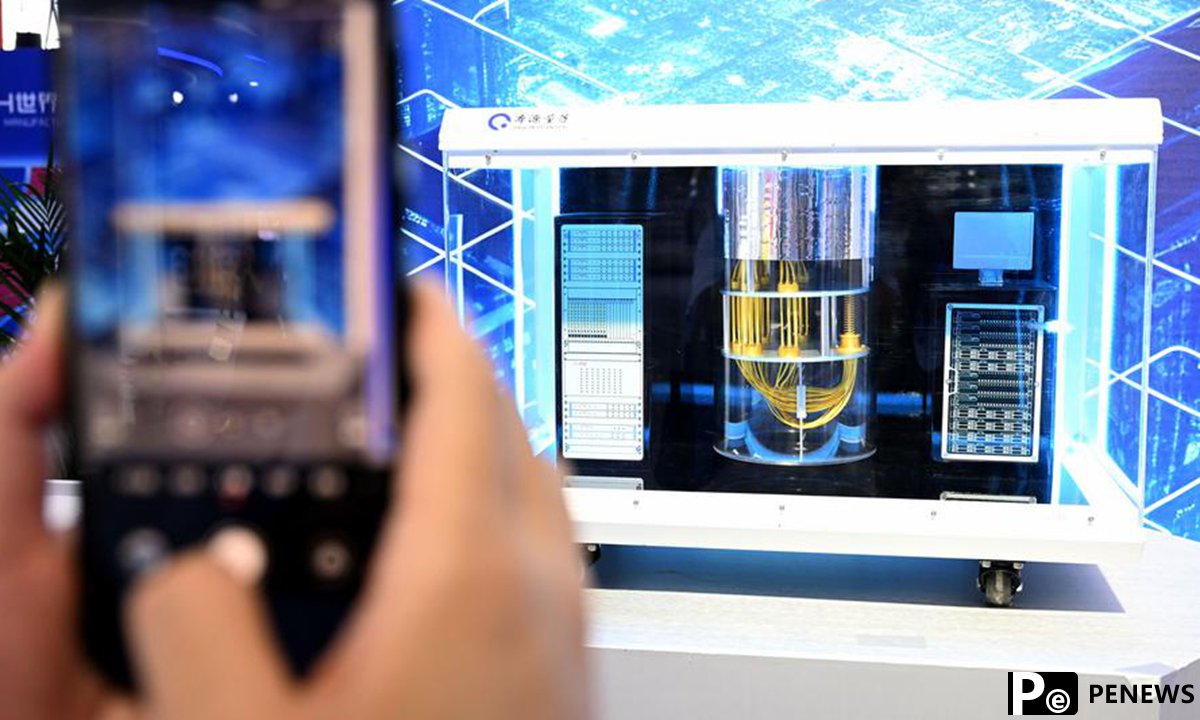Home>>
Chinese trendy toys go viral at international exhibitionsBy Ding Yazhi (Global Times) 10:34, May 07, 2025
Chinese trendy toys have made frequent appearances at recent international exhibitions, becoming a focal point of attention.
At the Comic Con Cape Town in South Africa held from May 1 to 4, Chinese trendy toys drew enthusiastic attention from exhibitors. At the recently concluded Canton Fair, domestic trendy toy companies also attracted the favor of many overseas buyers with their innovative design and exquisite craftsmanship. At the same time, from the queues winding to the street corners of Los Angeles stores in the US to young consumers eagerly unboxing "blind boxes" in the Galeries Lafayette in Paris, France, Chinese trendy toys are reshaping overseas consumers' "Made in China" perception.
In the US, despite tariffs raising the prices of the Chinese trendy toy "Labubu" from $22 to $28, consumers' enthusiasm has not diminished at all. The Global Times saw a blogger posting a video on the social platform, showing that before dawn, a long winding queue had appeared at the entrance of a shopping mall in California. Wrapped in blankets and seated on folding chairs, some fans even set up tents to wait overnight.
Similar scenes are unfolding across many countries, including the UK, France, and Thailand. Bian Wei, who has worked and lived in Paris for four years, used the word "explosive" to describe this situation. She told the Global Times that long queues have recently become common outside Chinese trendy toy stores.
In Thailand, Labubu has been popular for a long time. During a recent visit to a POP MART store, the Global Times observed that many outlets had installed multiple retractable queue barriers at entrances and exits, and each was equipped with a security guard. The entrance security guard was mainly responsible for maintaining the order of the queue, and the security guard at the exit would carefully check the customers' purchased goods and stamp the shopping list.
Mega Plaza Saphan Lek, a well-known toy mall in downtown Bangkok, is a favorite among toy collectors. It brings together more than 600 merchants, and nearly every floor features shops selling trendy Chinese toys. Many Thai consumers choose to shop here at a 1a0 percent-20 percent premium after failing to buy the latest Chinese trendy toys in other physical stores.
A vendor operating a stall near the escalator on the 5th floor, told the Global Times that many merchants around him have switched to the Chinese trendy toy business in the past two years. "It's so popular that there is no need to worry about a lack of customers."
Behind this buying boom is a transformative shift: traditionally, the label "Made in China" has been associated with "cost-effectiveness" and "OEM," and domestic toys are leading with price advantages. There are almost no toy brands that can be recognized by consumers. Today, Chinese trendy toy brands are forging a new path - using intellectual property and design to leverage emotional consumption, and "branding" has become a significant trend in the domestic toy industry.
According to a white paper released by the China Toy &Juvenile Products Association, in 2024, exports of China's independent toy brands rose to 65 percent of total toy exports, reflecting the development of China's toy industry from white label manufacturing to brand evolution.
Newsweek reported that part of the appeal is that Labubus are sold as "blind box" collectibles, which means you don't know which you've got until you've opened the box. This makes it harder to collect a full set and adds to the appeal of the unboxing videos. Some Labubu dolls are rarer and more valuable than others, which also adds to the mystery and appeal. The Labubu doll plays into one of the most dominant fashion trends of the past few seasons: the bag charm.
Li Yongjian, a researcher at the National Academy of Economic Strategy of the Chinese Academy of Social Sciences (CASS), said at a recent forum that China's trendy toy industry has performed strongly not only in the domestic market but also overseas.
A report released by the CASS National Academy of Economic Strategy estimated that the total value of China's trendy toy industry will reach 110.1 billion yuan ($15.14 billion) by 2026, with an average annual growth rate of more than 20 percent.
During the Canton Fair, toy companies from Dongguan, South China's Guangdong Province, integrated AI technology, enabling toys to speak multiple languages. In emerging markets such as Africa, the Chinese trendy toy exhibition area at the Comic Con Cape Town also drew significant attention. South African retailers said that although the market is still in its early stages, consumers are very interested in Chinese trendy toys, especially the novel "blind box" sales model.
Wang Peng, an associate research fellow at the Beijing Academy of Social Sciences, told the Global Times on Tuesday that trendy toy products have adopted a premium "culture + design" model through collaboration with multinational artists and localized IP customization. Meanwhile, Chinese trendy toys and other cultural products rely on social platforms to achieve widespread exposure through a "low-cost + high-interaction" strategy.











